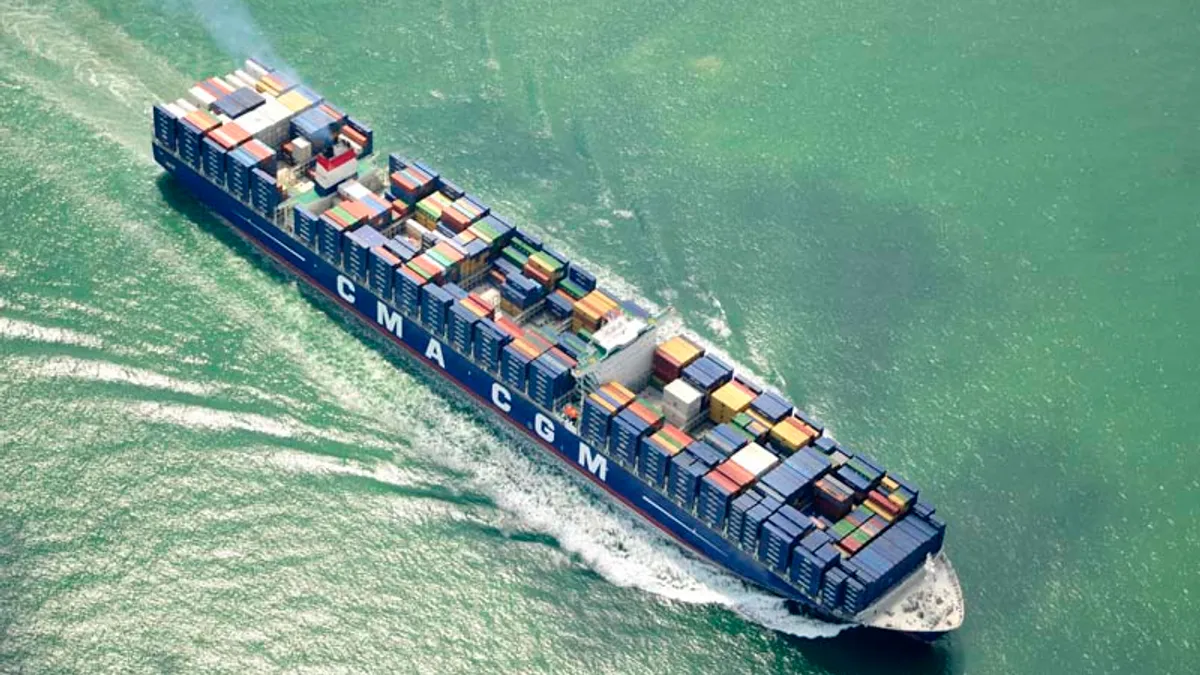Dive Brief:
- Drewry and the European Shippers’ Council (ESC) are publishing a bunker adjustment factor (BAF) indexing mechanism. The goal is to help shippers better understand the additional fuel fees going into place as carriers prepare to switch to more expensive, low-sulfur fuel in compliance with the International Maritime Organization's new sulfur regulations going into effect Jan. 1, 2020.
- The index outlines a way for BAF changes to be calculated. The shipper and carrier would agree on a baseline external fuel charge, but throughout the term of the contract this would be adjusted once per quarter based on the previous quarter’s average price for the external fuel reference.
- "By giving to shippers the possibility to better analyze present and future types of fuel costs this toolkit is representing a significant step towards a more transparent framework for the best interests of all parties," Jordi Espín, the maritime policy manager at the European Shippers’ Council said in a statement.
Dive Insight:
When Drewry conducted a survey of shippers and forwarders last year, it found only 18% considered their business either well prepared or very well prepared for IMO 2020 cost changes, while 54% said they were either poorly prepared or not at all prepared.
The survey also found that 56% of respondents were concerned about a lack of transparency regarding their carrier's fuel cost recovery plans, with about 80% saying they had received no clarification on how the additional costs would be covered.
The costs are expected to be significant for carriers. The new fuel that will allow carriers to comply with IMO 2020 regulations will cost about 50% more than the fuel currently used by these vessels. One report concluded carriers would need "significantly higher" surcharges ranging from 33% to 40% depending on the route to offset the cost of the more expensive low sulfur fuel. Multiple carriers have already begun announcing these new fees.
Drewry and the ESC set out to add clarity and transparency around this issue by using the index to set standards and definitions for bunker price measurement periods, BAF adjustment periods, fuel reference prices and the transparent indexing formula.
The standard set by this index includes quarterly adjustments for charges, but it also allows for a one-month lag to allow shippers and carriers to update invoicing and purchasing systems.














